What truly brings Ethereum to billions of users is not just what it can do, but what the real world chooses to do with it.
Author: Ada, David, Deep Tide TechFlow
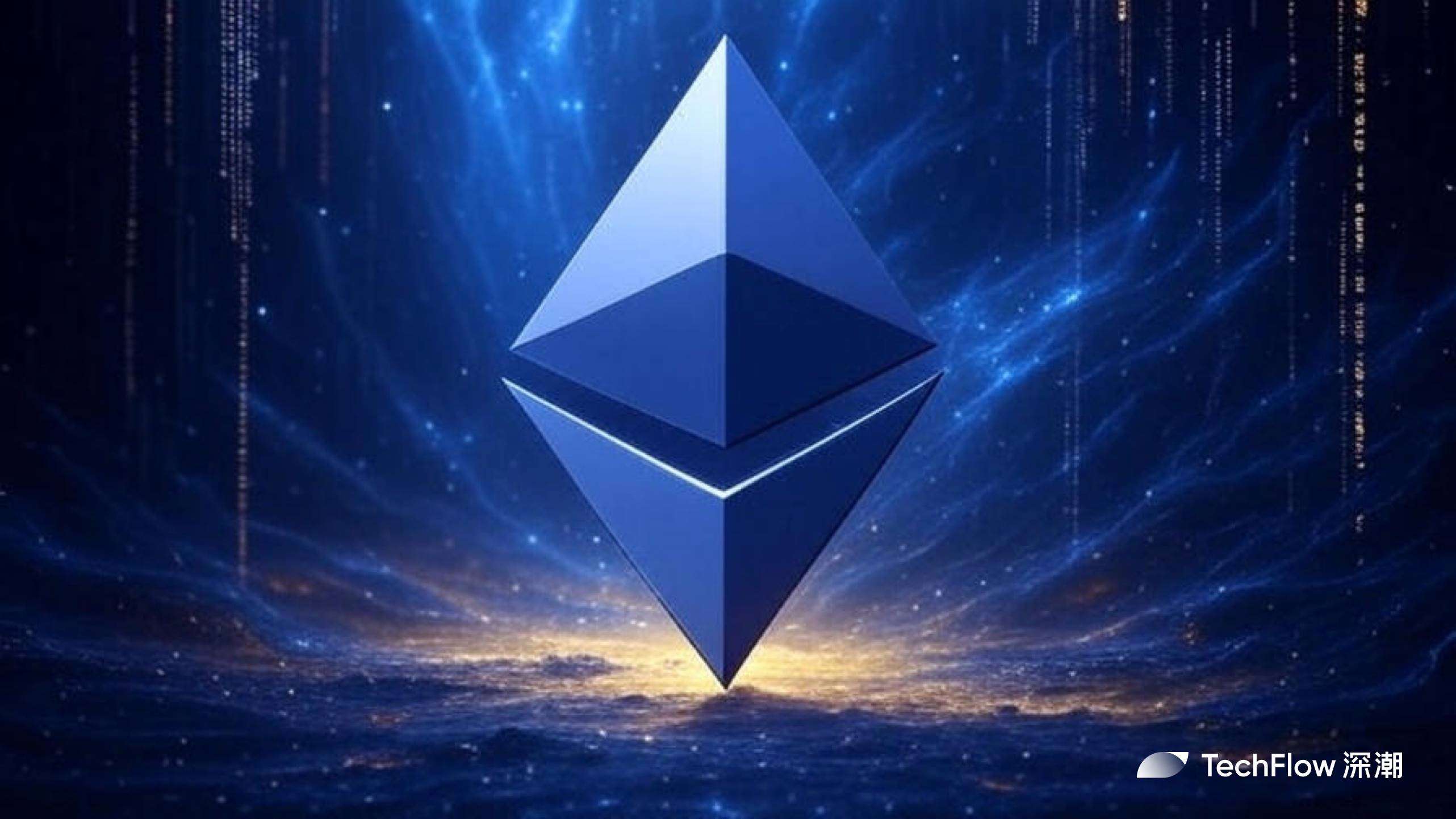
On July 30, 2015, at 3:26 PM, the first block of Ethereum was successfully mined.
Accompanied by that moment known as "Frontier," an ambitious prophecy was born — the "World Computer." Vitalik and the early developers believed they were building not an upgraded version of Bitcoin, but a global computing platform capable of running any decentralized application.
Today, ten years later, we celebrate the tenth anniversary of the Ethereum mainnet.
As we examine the trajectory of Ethereum's development, we find that this "World Computer" has not operated various decentralized applications as expected; instead, it has evolved into a settlement layer dominated by financial applications.
DeFi protocols account for the vast majority of Gas consumption, with trillions of dollars in assets circulating on this network, while those once-hopeful decentralized social, gaming, storage, and other applications have either vanished or migrated to other chains.
Is this narrative shift a compromise or an evolution?
Looking back at this juncture, the narrative changes of Ethereum over the past decade tell not just a story about Ethereum, but also a story about how technological ideals seek footholds in the real world.
World Computer, the Golden Age of Idealism (2015-2017)
To understand the origins of Ethereum's narrative, we must return to that winter at the end of 2013.
At that time, 19-year-old Vitalik Buterin was traveling in Israel when a bold idea struck him: What if blockchain could not only transfer value but also run arbitrarily complex programs?
The revolutionary aspect of this idea was that it expanded blockchain from a specialized value transfer tool to a general-purpose computing platform.
But behind this initial vision lay deeper cultural motivations.
The early Ethereum community was composed of a group of technological idealists who believed in "code is law." They were not just building a new technological platform; they were attempting to create a new social paradigm — a digital utopia that operates entirely by code without centralized authority.
At that time, the narrative was about "decentralization," in the "World Computer" of code as law.
This was not just a technological ideal but also a political declaration and philosophical stance. Early supporters of Ethereum believed that through smart contracts, they could reconstruct the rules of societal operation, creating a fairer, more transparent, and trustless world.
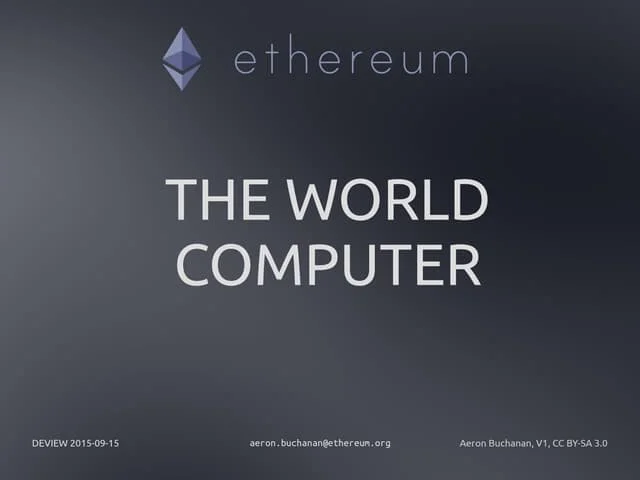
This technological idealism was evident in Ethereum's early design. The Turing-complete virtual machine, Gas mechanism, account model — every technical choice reflected the value orientation of "maximizing decentralization" and "maximizing generality."
On April 30, 2016, less than a year after the Ethereum mainnet launched, The DAO (Decentralized Autonomous Organization) officially started its crowdfunding.
This project perfectly embodied the idealistic spirit of the early Ethereum community: no management, no board, entirely controlled by code. In just 28 days, The DAO raised 11.5 million ETH, accounting for 14% of the total ETH supply at the time, worth over $150 million.
However, the ideal soon faced the harsh test of reality. On June 17, an attacker exploited a recursive call vulnerability in The DAO's smart contract, stealing 3.6 million ETH.
The ensuing debate tore the community apart. One side argued that since code is law, the ETH obtained through exploiting the code's vulnerability was "legitimate," and any human intervention violated the core spirit of blockchain. The other side contended that when the outcome clearly contradicted the community's common will, it was necessary to correct the error through a hard fork.
Ultimately, the majority, represented by Vitalik, chose the hard fork, returning the stolen ETH to the original holders. This decision led to Ethereum's first major split, with the minority adhering to the "Code is Law" principle continuing to maintain the original chain, now known as Ethereum Classic (ETC).
This crisis revealed the inherent contradictions of technological idealism: complete decentralization could lead to unacceptable consequences, while any form of human intervention could be seen as a betrayal of the principle of decentralization.
This contradiction has run through the entire development of Ethereum and has laid the groundwork for future narrative shifts.
ICO Token Machine, Lost in the Bubble (2017-2020)
At the end of 2016, no one could foresee how the upcoming ICO frenzy would change everything about Ethereum.
In the summer of 2017, the crypto world experienced an unprecedented capital frenzy. The simple concept of ICO (Initial Coin Offering) — raising funds by issuing tokens — ignited the imagination of global speculators. In 2017 alone, funds raised through ICOs exceeded $6 billion, and by the first half of 2018, this figure soared to $12 billion.
Ethereum became the token machine that hosted numerous ICOs.
Writing contracts, designing payment rules, naming tokens, and specifying quantities, tokens that did not require real-world commitments made their grand entrance:
A seemingly grand white paper, a story that could trigger FOMO (fear of missing out), and a seemingly reasonable token economic model.
At that time, Ethereum faced an unexpected identity crisis — initially designed as a "World Computer," it suddenly found its greatest use was issuing tokens.
This significant gap between reality and vision constituted the first major rupture in Ethereum's narrative.

Vitalik and the early core developers envisioned a global computing platform for running decentralized applications, but the market's response was: we only need a simple ERC-20 standard to issue tokens.
This simplification was not only technical but also cognitive. In the eyes of investors, Ethereum was no longer a revolutionary computing paradigm but a money-printing machine.
A deeper issue was that this "token issuance platform" label began to reshape Ethereum's development direction in reverse. When 90% of the activities in the ecosystem were token-related, development priorities inevitably tilted in that direction. Discussions about token standards in EIPs (Ethereum Improvement Proposals) far outnumbered those for other application scenarios, and developer tools primarily revolved around token issuance and trading, leading the entire ecosystem into a state of "path dependence."
If the earlier The DAO incident was a philosophical debate within idealism, the ICO boom was the first direct collision between idealism and market reality. This collision exposed a fundamental contradiction in Ethereum's narrative: the vast chasm between technological vision and market demand.
The following year, 2018, brought a bear market.
For Ethereum, this was not just a collapse in price but a collapse of narrative. When the ICO bubble burst and the slogan of the "blockchain revolution" was no longer believed, Ethereum had to answer a fundamental question:
If you are not the World Computer, then what exactly are you?
The answer to this question gradually emerged through the trials of the bear market. A new narrative began to take shape: Ethereum is primarily a financial settlement layer, and only then could it potentially become a general-purpose computing platform.
This shift was also reflected in the technical roadmap. The design of Ethereum 2.0 began to consider the needs of financial applications more — faster finality, lower transaction costs, and higher security. Although the official discourse still emphasized "generality," the actual optimization direction had clearly pointed towards financial use cases.
The correctness of this choice would be tested in the next phase.
DeFi's Great Victory, When Finance Became Ethereum's Calling (2020-2021)
The DeFi Summer of 2020 was not just an explosion of application layers for Ethereum; it was a complete transformation of identity.
If the ICO of 2017 unexpectedly turned Ethereum into a token issuance platform, the success of DeFi made the entire ecosystem realize: finance might not be Ethereum's compromise choice, but its natural mission.
This recognition was gradual.
Initially, DeFi was seen as one of many experiments, alongside gaming, social, supply chain, and other applications. But when Compound's liquidity mining ignited market enthusiasm, when hundreds of billions of dollars flowed into various DeFi protocols, and when Gas fees reached new highs due to DeFi activities, an undeniable fact emerged: Ethereum had found its Product-Market Fit.
In the past, positioning Ethereum as a financial platform seemed like a "dimensional reduction," a betrayal of the grand vision of the "World Computer." But DeFi showcased another possibility: finance itself is the most complex and valuable form of computation.
Every transaction, every liquidation, every derivative is a complex computational process. From this perspective, becoming the "World Financial Computer" is not contradictory to becoming the "World Computer," but rather a different expression of the same vision.
The explosion of DeFi created a powerful positive feedback loop, continuously reinforcing the narrative of Ethereum as financial infrastructure. The surge in usage, the gathering of developers, and the gradual shift in discourse began to amplify the voices of DeFi project teams.
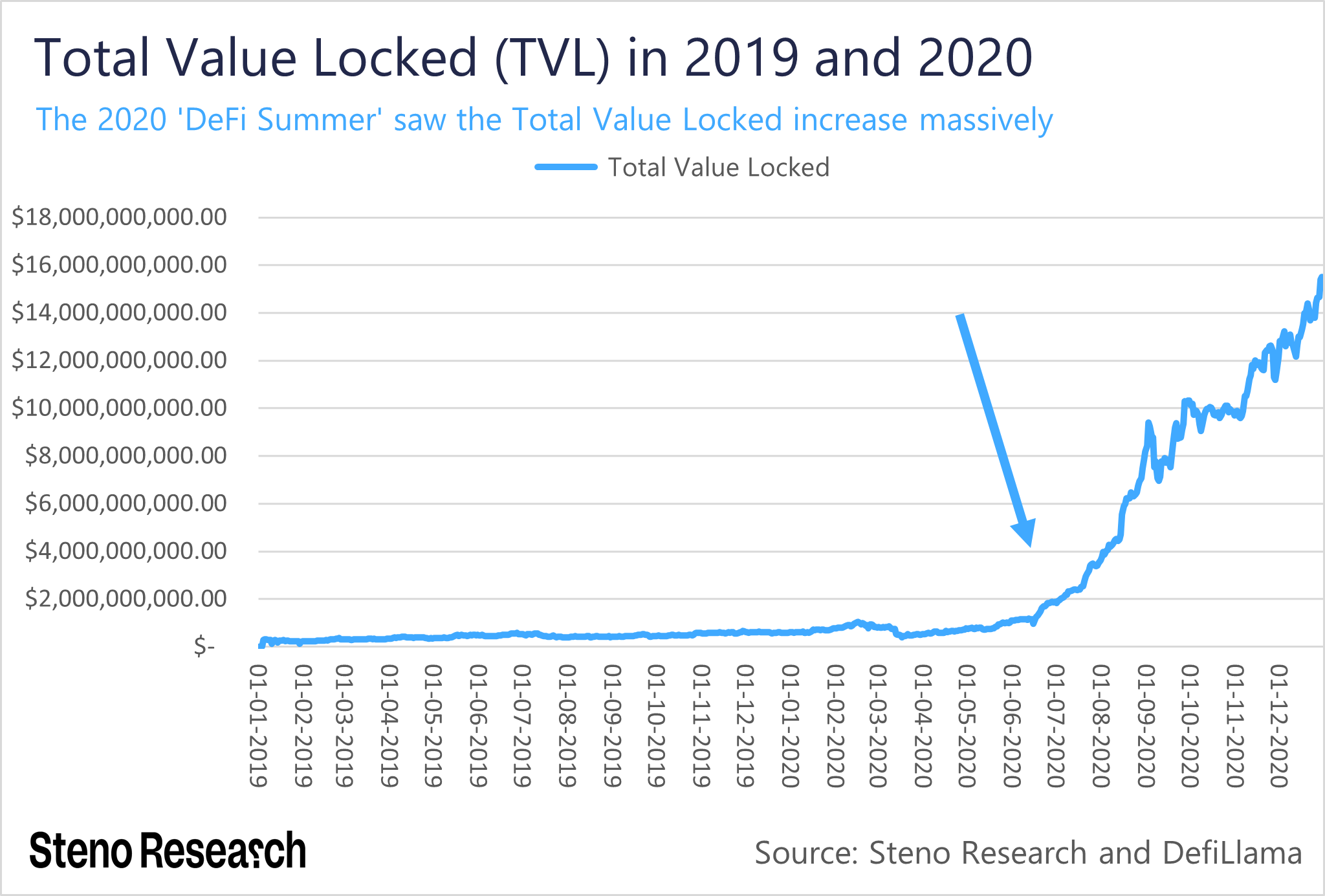
However, the success of DeFi also brought a severe reality check: Ethereum's performance bottleneck.
When a simple token swap requires paying dozens or even hundreds of dollars in Gas fees, Ethereum faces a survival crisis. This is no longer an ideal question of "how to become the World Computer," but a practical question of "how to keep DeFi running."
This urgency fundamentally changed Ethereum's technical priorities. In the past, scaling was seen as a long-term goal, a problem to be solved with the most elegant solutions over time. But the explosion of DeFi made scaling an immediate necessity. The Ethereum community had to accept a reality:
Perfect solutions can wait, but the market will not.
Thus, we saw a series of pragmatic choices. Layer 2 was no longer a distant concept but an urgent solution that needed immediate deployment. Rollup technology, while not sufficiently decentralized, could quickly alleviate congestion, thus gaining the full support of core developers. The roadmap for Ethereum 2.0 was also readjusted to prioritize features most beneficial to DeFi.
This adjustment in the technical roadmap is essentially a concrete manifestation of the narrative shift. Once Ethereum accepted its positioning as financial infrastructure, all technical decisions began to revolve around this core.
The Rise of L2, Sovereignty Transfer, and Parasites (2021-2023)
In 2021, Ethereum faced a harsh reality: the success of DeFi was killing Ethereum.
When a simple transaction requires waiting for several minutes, and ordinary users are squeezed out by high costs, Ethereum's narrative faces a new crisis. The positioning of a "global financial settlement layer" sounds great, but if only the wealthy can afford it, can this narrative still hold?
The deeper contradiction is that Ethereum's success has exposed fundamental flaws in its architecture. As a monolithic blockchain, Ethereum attempted to handle everything on the same layer: executing computations, validating transactions, storing data, and reaching consensus. This "all-in-one" design was an advantage in the early days but became a fatal weakness during the scaling phase.
Faced with this dilemma, the Ethereum community underwent a painful cognitive shift. A true world computer should be a modular, layered system, much like the internet.
This shift was most clearly articulated in an article by Vitalik: "The future of Ethereum is modular."
This statement marked another significant turning point in Ethereum's narrative. From "one chain rules all" to "a multi-layer collaborative ecosystem," Ethereum began to accept a reality — a single blockchain cannot meet all needs; the future belongs to specialized division of labor.
Thus, when Rollup solutions like Arbitrum and Optimism began to handle an increasing number of transactions, the fundamental question emerged. If most activities occur on Layer 2, then what is the Ethereum mainnet?
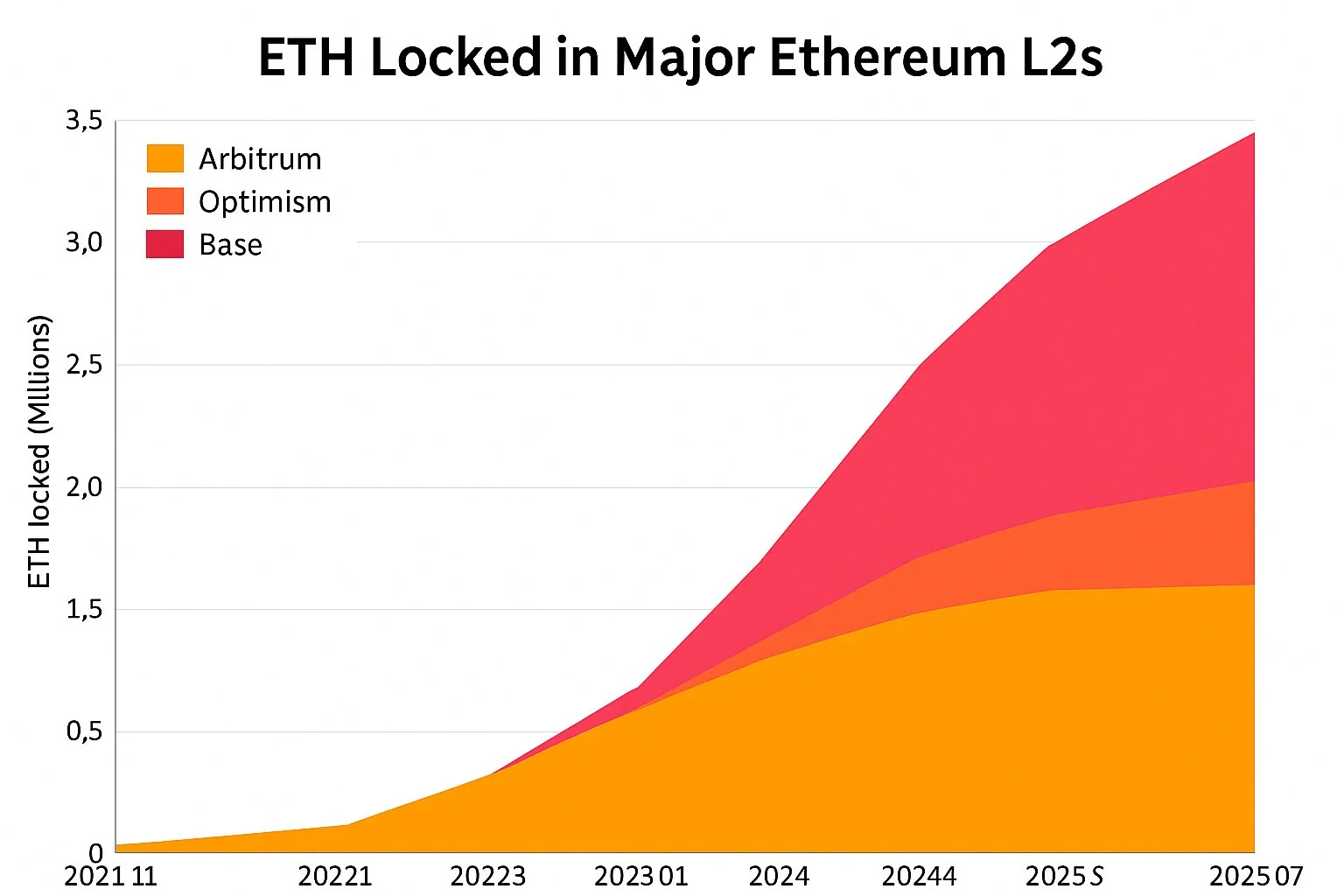
In 2022, this question manifested more clearly in the tension around data availability. When projects like Celestia proposed dedicated data availability layers, the balance between openness and control in Ethereum was being played out around the data availability (DA) debate.
Ethereum has always touted openness and decentralization, but when this openness threatens its own position, the community's response becomes complex. Some began to use the concept of "Ethereum Alignment," attempting to maintain some form of control while being open.
Interestingly, this debate changed the definition of success.
In the past, success meant that all activities took place on Ethereum. Now, success has been redefined as: even if activities occur elsewhere, as long as they ultimately require Ethereum's security, it is a victory for the Ethereum ecosystem. This change in definition reflects Ethereum's shift from "exclusivity" to "symbiosis."
The Battle of Hundreds of Chains and the Defense of "Orthodoxy" Narrative (2023-2024)
In 2023, a subtle but important change emerged in the blockchain world: the new generation of public chains no longer tried to be "better Ethereum," but began to tell a completely different story.
Solana no longer emphasized itself as "a faster smart contract platform," but positioned itself as "the Nasdaq of blockchains." Aptos and Sui do not talk about "decentralization," but emphasize "Web2-level user experience."
For Ethereum, this change is both a relief and a challenge. The relief lies in no longer being caught in an arms race of performance parameters; the challenge is that as competitors carve out new battlegrounds, Ethereum's traditional advantages may become irrelevant.
The deeper question is: When "decentralization" is no longer the only value standard, how attractive is the core value that Ethereum prides itself on?
The complexity of this narrative competition is most evident in Solana's resurgence.
After the FTX collapse in 2022, everyone thought Solana was finished. But in 2023, it made a strong comeback with meme coins and low-cost transactions. This phenomenon revealed an unsettling fact for the Ethereum community — the market may not care about decentralization as much as they imagined.
In the face of the rise of new public chains, the Ethereum community's first reaction was to emphasize "orthodoxy."
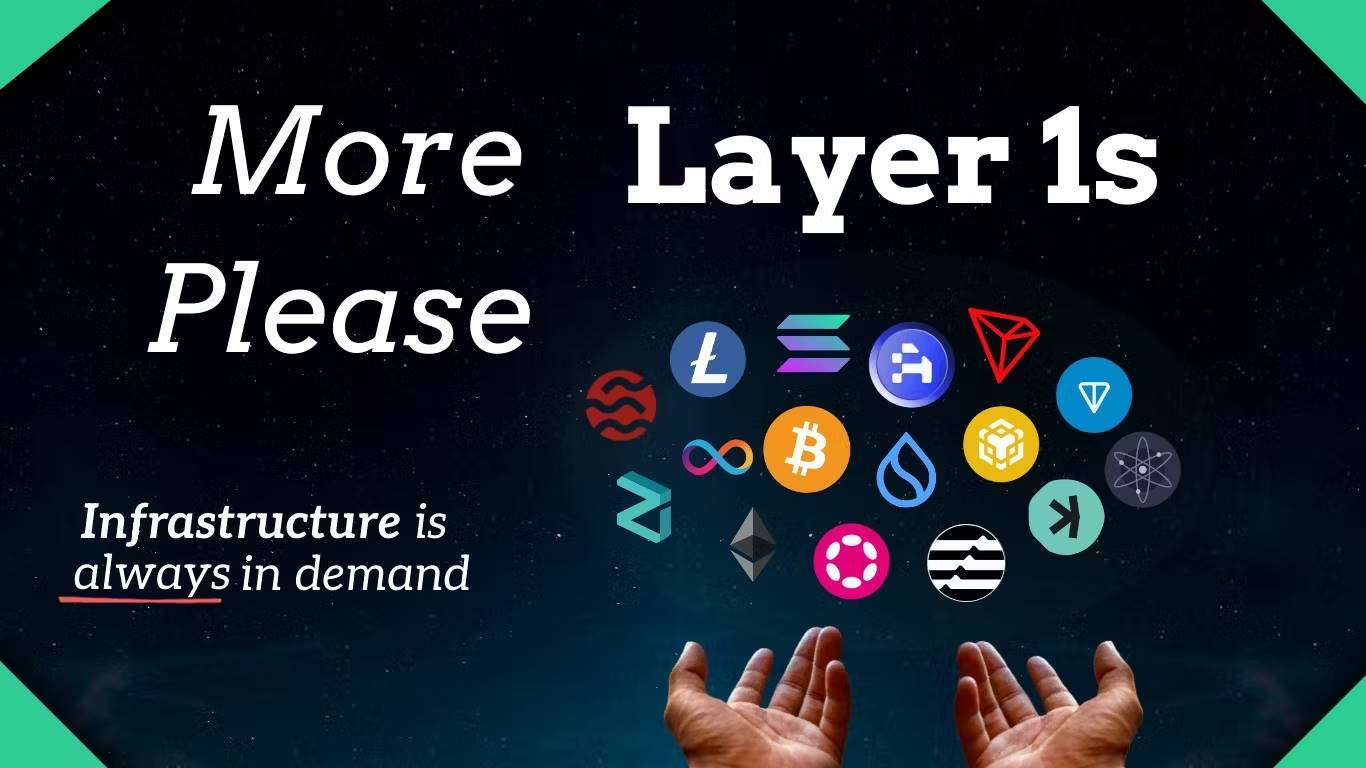
Ethereum supporters pointed out the centralization issues, security risks, and technical compromises of these chains. However, the market's response was surprisingly lukewarm. When users can complete transactions at a cost of just a few cents, they seem unconcerned about whether the network is "sufficiently decentralized."
When Ethereum attempted to explain its value in pragmatic terms, it lost its original moral high ground. "We are safer" sounds far less compelling than "We are building a decentralized future." This secularization of the narrative, while potentially attracting more mainstream users, may also alienate core supporters.
More complexly, new public chains began to redefine "decentralization."
They argue that true decentralization should allow ordinary people to participate, rather than being an elite network only the wealthy can afford. When Solana users criticize Ethereum's high Gas fees with this perspective, Ethereum finds itself trapped in a moral dilemma of its own making.
By early 2024, a disturbing trend became apparent: Ethereum's narrative was becoming increasingly defensive. Most discussions were not about "what we want to build," but rather "why we are better than other chains." This shift from offense to defense exposes the innovation dilemma that Ethereum faces.
This defensive posture manifests in several ways.
The technical roadmap increasingly responds to competitive pressure rather than an intrinsic vision, and community discussions are filled with criticisms of other chains rather than self-reflection. Even Vitalik's articles have increasingly focused on explanation and defense rather than proposing bold new ideas as they did in the early days.
More seriously, this defensive mindset began to affect the innovative vitality of the ecosystem. Developers no longer ask "what is possible," but rather "what is safe." Investors are no longer seeking breakthrough innovations but are looking for "the killer of the Ethereum killer." The entire ecosystem has fallen into a state of internal competition, busy with internal struggles rather than external expansion.
The root of this situation lies in the exhaustion of the narrative. When the "World Computer" proves too grand, the "DeFi settlement layer" too narrow, and the "modular blockchain" too technical, Ethereum lacks a new narrative that can inspire imagination.
Narrative Reconstruction and the Future (2024-)
In 2024, as the crypto market seeks new growth drivers again, RWA (Real World Assets) has become the new savior. For Ethereum, this is not just a new application scenario but an opportunity for narrative reconstruction. From "changing finance" to "connecting reality," Ethereum attempts to tell a more pragmatic and mainstream story.
The appeal of Ethereum's RWA narrative lies in its specificity.
It is no longer the abstract "decentralized finance," but "turning your US Treasury bonds into tradable tokens." It is no longer "permissionless innovation," but "reducing friction costs in cross-border trade." This shift from idealism to pragmatism reflects the Ethereum community's new understanding of market demands.
More subtly, the RWA narrative has changed the definition of success. In the past, success meant creating a brand new, native crypto economy. Now, success has become serving the existing financial system.
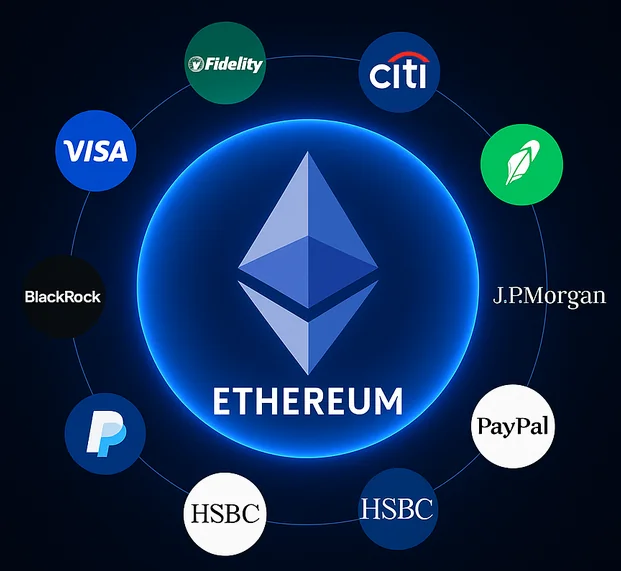
Old money on Wall Street is rushing to enter ETH ETFs, and Ethereum co-founders are jumping into the US stock market to acquire shell companies… Assets are breaking out, and the correlation between coins and stocks is gradually bringing Ethereum back to $4000 in the new market cycle.
The gameplay has changed, and the narrative has changed.
In the past, the community was always looking for "the" grand narrative that could define Ethereum; now, more and more people are beginning to accept a reality: perhaps there is no single answer at all.
People are no longer pursuing a unified, all-encompassing story but are allowing multiple narratives to coexist. For DeFi users, Ethereum is financial infrastructure; for enterprises, it is a tool for crypto transformation; for creators, it is a copyright protection platform; for idealists, it remains the decentralized future.
Let Ethereum serve broader needs and attract a more diverse user base.
We just don't know whether this diversification is a sign of maturity or a symptom of being lost. A healthy ecosystem should indeed embrace diversity, but a platform lacking a core vision may lose its momentum.
Nevertheless, the marginal effect of technological innovation is diminishing, and narrative innovation must continue.
When technology and narrative become decoupled, rather than inventing new jargon, it is better to solve real problems. Rather than promising to change the world, it is better to first improve user experience. This pragmatic attitude, while perhaps less exciting, may be more sustainable.
A cup of wine in the spring breeze, ten years of lanterns in the night rain.
From idealism to realism, from revolution to reform, from disruption to integration. Ethereum's decade may not necessarily be a betrayal of its original intention, but rather the cost of growth. After all, when the old story is told, the new story can begin.
Perhaps, what truly brings Ethereum to billions of users is not just what it can do, but what the real world chooses to do with it.
From vision to reality, from promise to delivery, this may be the ultimate direction of Ethereum's narrative evolution. And the gains and losses, progress and retreat, persistence and compromise in this process will define not only Ethereum but also the future of the entire crypto industry.
免责声明:本文章仅代表作者个人观点,不代表本平台的立场和观点。本文章仅供信息分享,不构成对任何人的任何投资建议。用户与作者之间的任何争议,与本平台无关。如网页中刊载的文章或图片涉及侵权,请提供相关的权利证明和身份证明发送邮件到support@aicoin.com,本平台相关工作人员将会进行核查。




